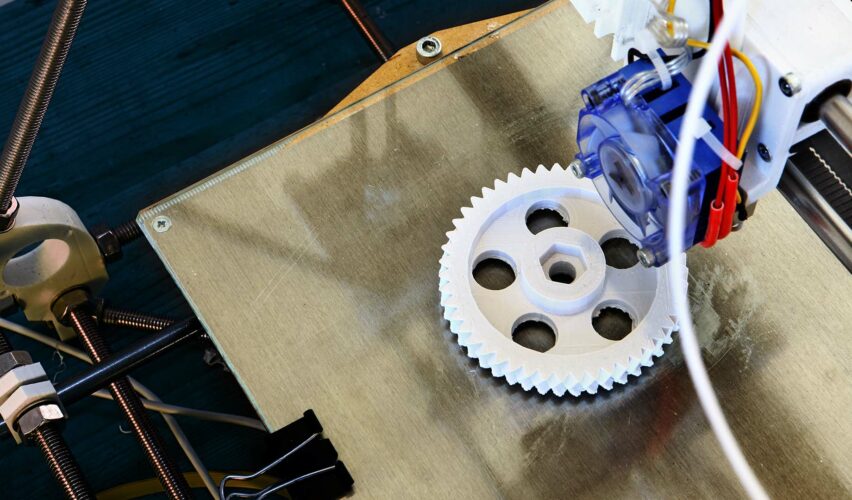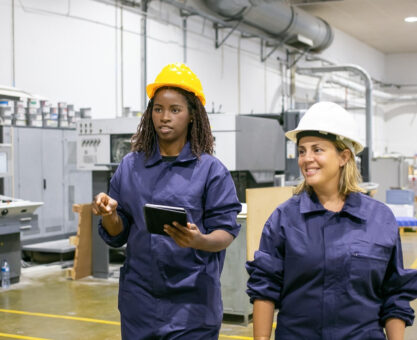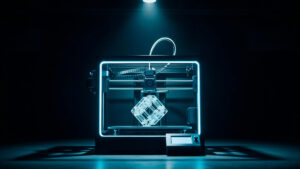(First published – 19/08/2014)
Do you ever stop and think that the technologies that are now commonplace in the field service industry seem to be lifted straight from the pages of Star Trek creator Gene Roddenberry’s notebooks?
Certainly modern smart phones are on a par with the communicator devices found on the Enterprise, and now we are seeing the replicator come to life in the guise of additive (or 3D) printing. But what exactly is 3D printing, how does it work and what can it mean to field service?
3D printing 101:
As with most technologies, the background of 3D printing actually dates back much farther than it would appear at first glance. The first origins of the technology stretch back over 40 years to the late 70’s although the first working 3D printer is credited to Chuck Hall of 3D systems back in 1984. However, it wasn’t until the turn of the century that we began to see the technology finally become a commercial reality and since then there has been large growth in the sale of 3D printers as their price has become more and more accessible. In fact the 2012 figures put the market at $2.2 billion worldwide, an increase of 29% year on year.
The process itself involves making a three dimensional solid object, which can be virtually any shape from a digital model created using computer aided design (CAD) software. In simplistic terms this is achieved by laying successive layers of material on top of each other. Essentially this is where 3D printing differs from all other forms of manufacturing, in that traditional methods start with a block and then subtract material until it is the right shape, in 3D printing you start with nothing and then add layers (hence the alternative name of additive printing) of material to build your product.
Within the last few years we have seen the techniques used in 3D printing (of which there are now many variations) leap forward and products as diverse as clothing, turbine parts and even chocolates can now be created via a 3D printer.
3D Printing in the mainstream:
With the 3D printing industry now on set to explode into a fully-fledged mainstream industry we are seeing a number of companies now entering the market with home based 3D printers, most of which tend to look like a high end coffee machine and are available from anything for £500 to £3,000. In fact the market place is already becoming crowded with specialist makers such as MakerBot, Ultimaker and Cubify all competing with a variety of models, and surely it is only time before we start seeing bigger brands like Motorola or Sony enter the market place as well.
At the other end of the scale, there are companies like Makerbot parent Stratasys, a 3D printing company formed way back in 1989, that offer 3D production facilities able to create specialist parts that capable of being both durable and intricate enough to be used in industries such as Automotive, Commercial Manufacturing and Aerospace.
Another big benefits of the additive process is that unlike traditional manufacturing of parts where the production run of a small number of a specific part is often simply uneconomical, the cost of manufacturing each individual part remains constant regardless of the size of production run. This means that one off manufacturing of a part is now a completely feasible concept financially.
Also with any technology or as the market grows, so does competition, which in turn drives performance. Perhaps the most significant and dramatic improvement we have seen as a result of growing competition in this space is the speed in which the actual printing process is now completed. I remember seeing 3D printing for the first time just a couple of years back and whilst the end result was undoubtedly impressive it was still a relatively slow process. Today we are seeing print speeds of under 15 minutes for smaller to medium sized pieces.
So what does this mean to field service?
Well for a start lets take the two sides of the industry discussed… In home 3D printing, we have seen a drive for smaller, more mobile printers and in industrial 3D printing we are seeing materials such as metals and high performance thermo plastics being used to create parts durable enough to have genuine commercial applications. Surely it is just a matter of time before we see these two elements converge to give us portable manufacturing capabilities?
In the not to distant future could we see field service engineers arrive on site identify which parts of a product need replacing and simply head into the back of the van, upload the specifications and print the part they need? With no need to wait for the parts to be firstly ordered and secondly delivered, we would be seeing first time fix rates soar.
How about we combine this technology with another emerging technology namely machine to machine (M2M) diagnostics. Rolls Royce jumbo jet engines for example are already self monitoring, where the engine itself has it’s own built in computer system that relays information to their field staff.
It does not require a huge leap of imagination to take this a step further… As soon as the engine’s computer reports a minor fault in one of it’s components it transmits this information to a local field team waiting at it’s next scheduled landing destination. The required part is then printed automatically on site thus allowing the field service engineer to quickly fix the issue with the freshly printed required replacement part ready to hand. An interesting concept isn’t it?
Whilst the technology is still perhaps a few years away from being perfected to these levels of sophistication, it would seem that 3D printing could genuinely live up to it’s reputation of being the second industrial revolution and it’s impact on field service could indeed be quite spectacular.















